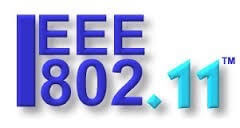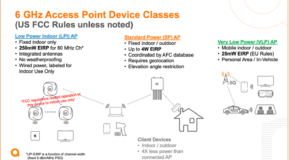
The 802.11 standard can be something of a mystery, especially when you are new to wireless networking. Have you ever wondered why wireless LANs work the way they do? WLAN configurations are full of cryptic options. Do you know what they do? Ever tried to make heads or tails of a packet capture and not understood what all the pieces are or if they are working the way they are supposed to? You can search for the answers with Google, but you might consider looking to the standard for the answers. If you really want to understand wireless, you need to gain some familiarity with the standard.
For the finest Wi-Fi under the hood reading, you want the 802.11-2016 standard. If you want to learn more about how the 802.11 standard is created, check out my post The 802.11 Standard and You. To get your own PDF copy of the standard, head to http://standards.ieee.org/about/get/ 802/802.11.html and grab it. There are a few amendment documents available as well, but the only one you a probably interested in is the 802.11ac amendment. You may as well grab it while you are there.
Now hold on to your hat because the 802.11-2016 standard weighs in at a hefty 3534 pages. That's a non-trivial read for anything, let alone a highly technical topic. The place to start is the Introduction. It lists all the amendments that have been incorporated into this version of the standard. For example, 802.11n, 802.11r/k/v, etc are listed there and it shows you they are now part of the 802.11-2016 standard. You can use this information to see how the standard changes over time. When a new version of the standard comes out, you can see which new amendments are integrated.
The next thing I recommend you read is the Definitions, acronyms, and abbreviations chapter. You may have noticed that Wi-Fi (and networking in general) uses a lot of acronyms. This is your answer key to what those actually mean. This chapter is also important in helping you understand what the standard is saying and for helping you communicate clearly with other Wi-Fi professionals. For example, you may have seen people rail against the use of "WAP" referring to an "Wireless Access Point." If you read through the standard you will not find that term or acronym used anywhere. The term used throughout the standard is "access point" or "AP."
The next section is chapter 4, General description. This gives something of a conceptual overview of how wireless works. It may surprise you to find that it is actually written in pretty straight forward English. For example, I will highlight this section on mobile stations (STAs):
"4.2.4 The impact of handling mobile STAs
One of the requirements of IEEE Std 802.11 is to handle mobile as well as portable STAs. A portable STA is one that is moved from location to location, but that is only used while at a fixed location. Mobile STAs actually access the LAN while in motion.
For technical reasons, it is not sufficient to handle only portable STAs. Propagation effects blur the distinction between portable and mobile STAs; stationary STAs often appear to be mobile due to propagation effects.
Another aspect of mobile STAs is that they may often be battery powered. Hence power management is an important consideration. For example, it cannot be presumed that a STA's receiver is always powered on."
Hopefully, you find that to be pretty straightforward. Not all of it is this straightforward, but given the complexity of the topic they have done a great job of making it understandable.
As you dive deeper, you can start diving into the Frame formats chapter to understand the details of your packet captures. If you are trying to understand how authentication works, you might want to look through the Security chapter. Whatever it is you want to know about the standard, it's all there.
It's worth noting that what you will not find absolutely everything related to Wi-Fi there. Some technologies are vendor proprietary, for example, you will not find details on how ARM works. The focus of the 802.11 standard is on RF and how to bridge the RF environment with the wired environment, so you will not find protocols like CAPWAP or RADIUS defined. These protocols are covered by the IETF in RFC5415 and RFC2865, respectively.
Every few years, the 802.11 work group will roll up a number of the amendments into the standard. They are no longer amendments but part of the 802.11 standard. That's how we get 802.11-2007, 802.11-2012, and 802.11-2016. An important note is that the standards are not free to download until six months after publication. If you want it before that, you have to pay (kind of a lot) for them.
I hope this helps you get started in learning the 802.11 standard and gaining a deeper understanding of Wi-Fi. Knowing the standard should serve you well when troubleshooting and deploying them. Having a deeper understanding of WLANs also makes it easier to communicate with your peers in IT and explain wireless to your users. I hope you enjoy learning Wi-Fi as much as I do!




